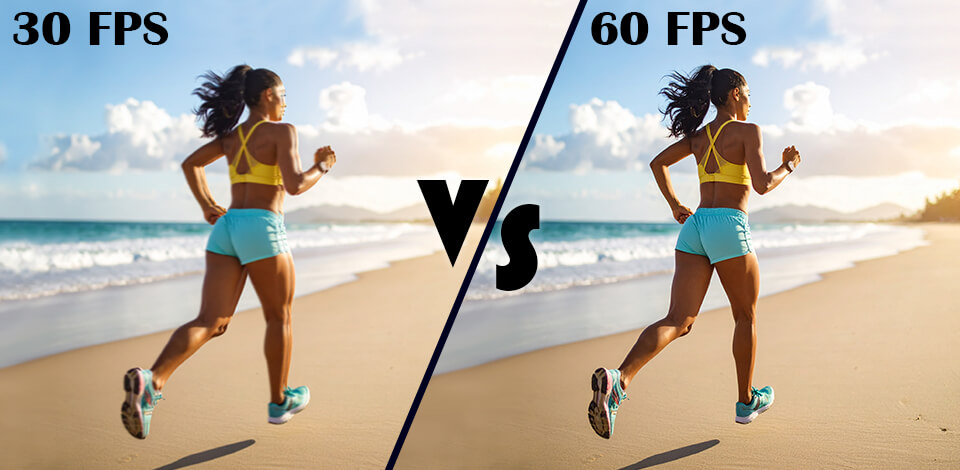
Professionals who shoot movies or TV series often choose a 30 FPS to achieve cinematic quality, while those who want to capture fluid motion when shooting sports, action videos, and gameplay typically opt for 60 FPS. If you need to create a high-quality video, be sure to compare 30 vs 60 FPS to choose the best option depending on the desired quality.
As a gamer who recently tapped into streaming, I have always wanted to understand the 30 FPS vs 60 FPS difference to know which option was more suitable for my content. When I was playing RPGs at 30 FPS at a slow pace, I was able to enjoy smooth gameplay. However, when I started to play competitive shooters and racing games, I noticed that the visuals became laggy.
I switched to 60 FPS, and it completely transformed my experience. I was able to get an edge over my competitors as well.
When I started to stream my gameplay, I noticed that 30 FPS was enough for Q&A sessions or games that did not have any fast action scenes. However, when I started to stream dynamic games, I had to use 60 FPS to give my content a professional look. My viewers preferred videos with smooth visuals, so a higher frame rate helped me boost engagement.
My 30 FPS vs 60 comparison showed that the former is better suited for slow games, while the latter is the top choice for dynamic games and streaming. Consider what content you want to create and think about the preferences of your audience to choose the right frame rate.
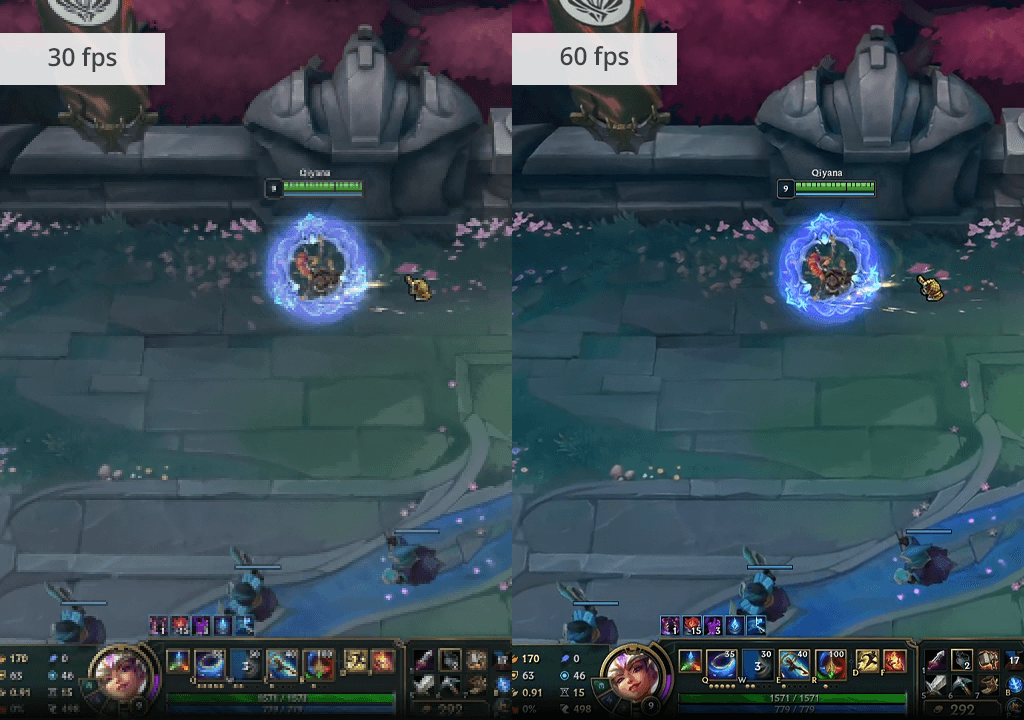
Frames per second (FPS) is the number of frames displayed in every second of video playback. For instance, if one records and plays a 30 FPS video, 30 frames will be displayed every second to recreate motion. A higher frame rate allows for capturing smoother motion.
When shooting silent films, many directors used a lower frame rate ranging from 16 to 24 FPS. As projectors were controlled manually, people who operated them could control the playback speed.
It allowed filmmakers to experiment with different frame rates to make their films more engaging. They would speed up videos during comic scenes or slow them down in dramatic scenes to emphasize their emotional meaning. If you want to learn what is 30 FPS vs 60 FPS and how to use these frame rates in different situations, consider the tips below.
Lower frame rates, like 24 FPS or 30 FPS, are a better choice for those who want to achieve cinematic quality and shoot videos in an artistic style. This frame rate suits narrative-based videos, interviews, or scenes where subjects do not move quickly.
Higher frame rates, like 60 FPS or 120 FPS, are preferred by those who need to shoot intense videos with a lot of dynamic action, including sports videos and footage of subjects who move quickly. These frame rates enable a videographer to capture smooth motion, making them perfect for gamers, streamers, and content creators who record fast-paced videos.
Higher frame rates for video have a higher density of frames per second, thus enabling professionals to capture movement in high detail. If you need to capture a scene with fast-moving subjects and avoid blur, use 60 FPS. A high frame rate makes it easier to record sports games, stream live-action content, and capture intense gameplay.
People often use Hz (Hertz) and FPS interchangeably; however, these parameters describe different things impacting a viewing experience.
FPS is a number of frames captured in one second of footage. Hz is a number of times the display screen refreshes per second. If your display has a 60Hz refresh rate, it recreates an image on the screen 60 times per second. This parameter is especially important for gaming monitors.
You often need to consider both FPS and Hz. If the display’s refresh rate is lower than the frame rate, you may notice some issues that will affect your viewing experience. It’s better to choose a display with a higher Hz value, like 120Hz or 240Hz, to ensure that you won’t notice blur when watching action-packed content.
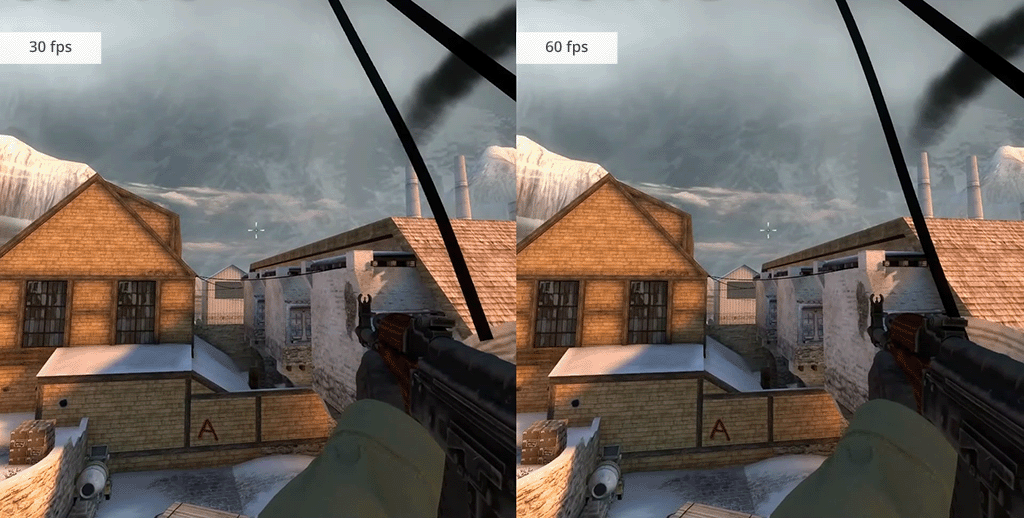
If you are into streaming, 60 FPS might be a better choice than 30 FPS. A higher frame rate will allow you to record more frames per second, which will make your streams more detailed and less blurry.
For instance, if you stream dynamic games and action videos, 60 FPS will allow you to achieve higher clarity and capture detailed content. However, you will have to use a computer with higher processing power, plenty of storage space, and a broad internet bandwidth.
Even though you will achieve higher video quality when streaming at 60 FPS, a higher frame rate has disadvantages. If you want to make your stream stable, be sure to check whether your computer is powerful enough before switching to a higher frame rate.
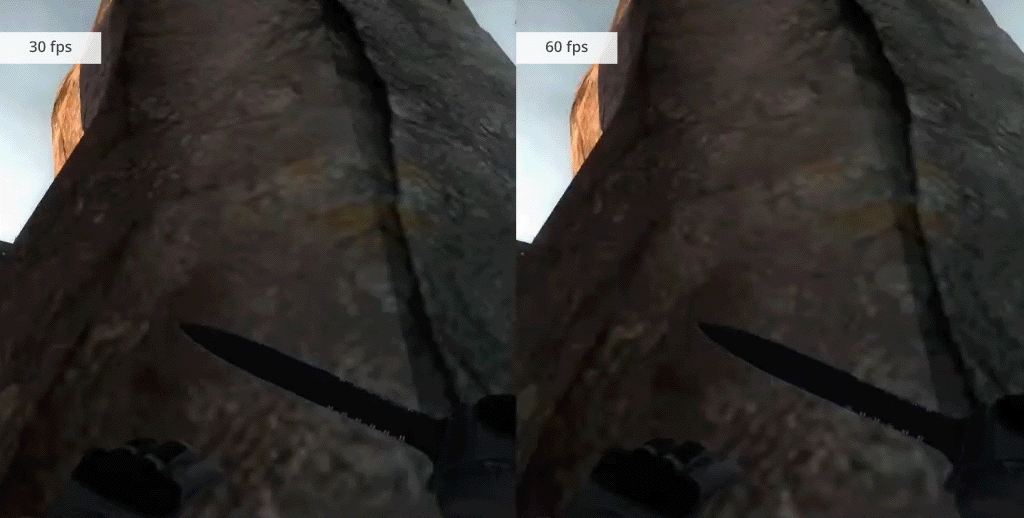
If you are a gaming fan, choose between 30 FPS and 60 FPS depending on the game genre and your preferences. 30 FPS will allow you to enjoy a cinematic atmosphere. This frame rate is used by those who play slow-paced games where there is no need to focus on motion. It allows you to use fewer CPU resources, making it the top choice for older gaming PCs.
60 FPS allows you to enjoy seamless motion and short response times, making it the perfect choice for those who engage in competitive gaming and prefer playing first-person shooters, racing, or fighting games. Learning about the 30 FPS vs 60 FPS gaming settings will make your gameplay more enjoyable and give you an edge over competitors.
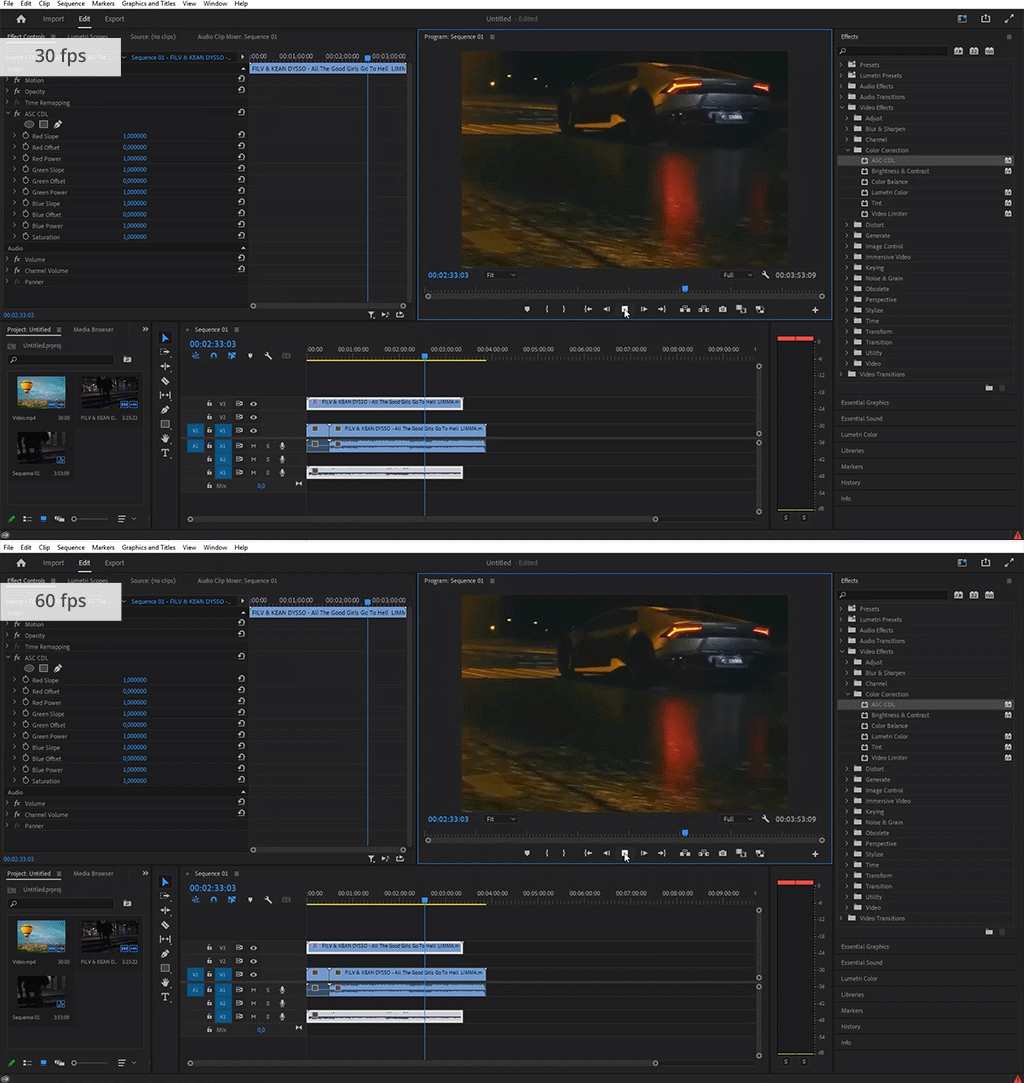
If you need to create YouTube content, consider the type of video you are going to shoot. The lower frame rate is more suitable for shooting slow-paced videos like interviews, Premiere Pro, or Photoshop tutorials, or lifestyle vlogs. It’s also suitable for those who do not have a broad bandwidth and need to reduce file size to ensure that their stream will be stable.
At the same time, 60 FPS is an excellent choice for streaming dynamic videos, gameplay, or sports clips. A high frame rate makes videos more immersive and improves their quality. It allows viewers to enjoy content on modern displays. When choosing between 30 FPS vs 60 FPS for YouTube, consider whether there are a lot of gaming or sports fans among your target audience.
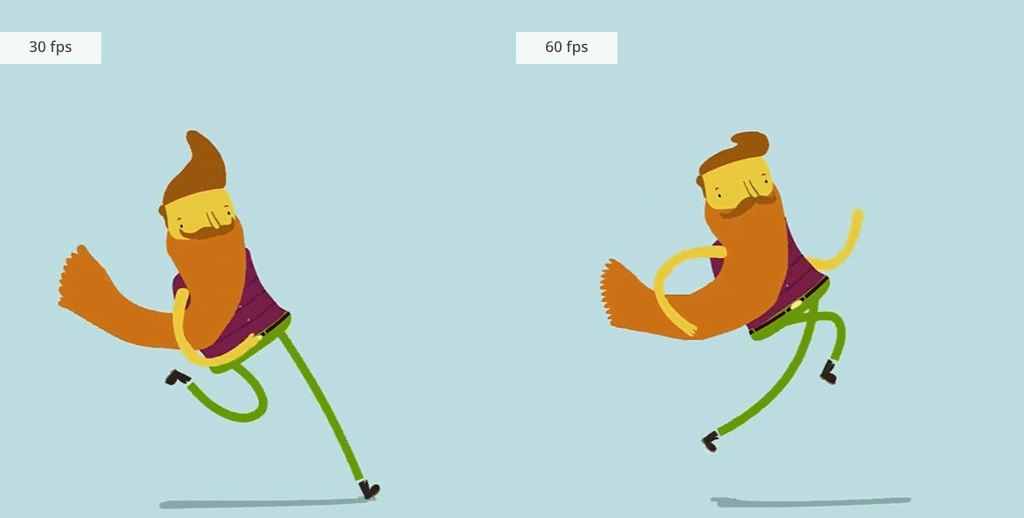
If you want to know more about 30 FPS vs 60 FPS settings for creating animation, consider your artistic style and the type of animation you need to create. 30 FPS is the best for traditional animations based around a specific story. This frame rate facilitates shooting narrative-focused content with an artistic feel. It makes it easier to render a video later and expedite the editing process.
60 FPS is the top choice among those who work on action scenes and detailed motion graphics. It allows animators to show highly detailed movements, capture fast-paced action scenes, or use advanced visual effects. If you need to add fight scenes or show futuristic inserts, 60 FPS will allow you to produce highly detailed content.
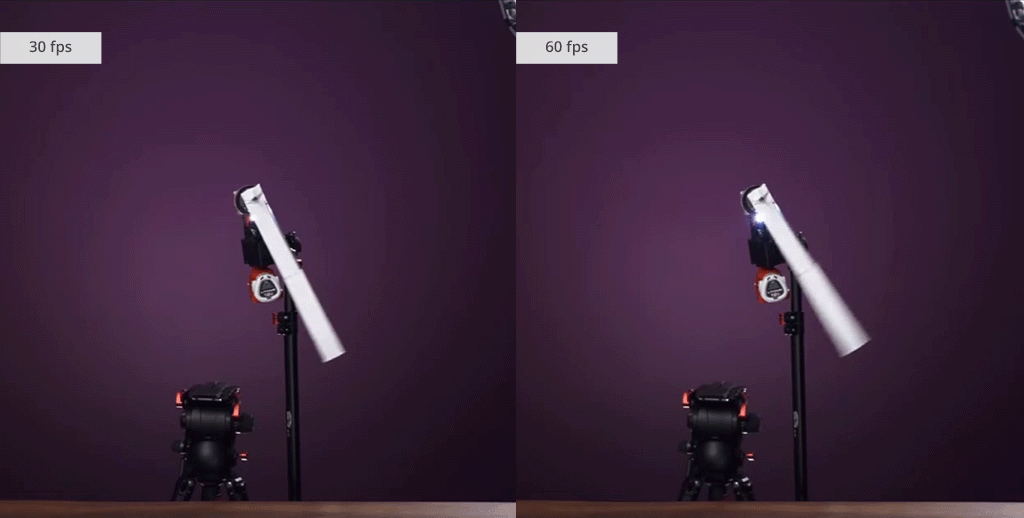
If you need to capture subjects who move quickly, use a 60 FPS frame rate. It will allow you to avoid motion blur and capture fast-moving subjects more realistically. When shooting at 60 FPS, you will use a shutter speed of 1/120th of a second. It’s twice as high as 30 FPS at 1/60th of a second. If you shoot at 30 FPS, it might result in noticeable blur.
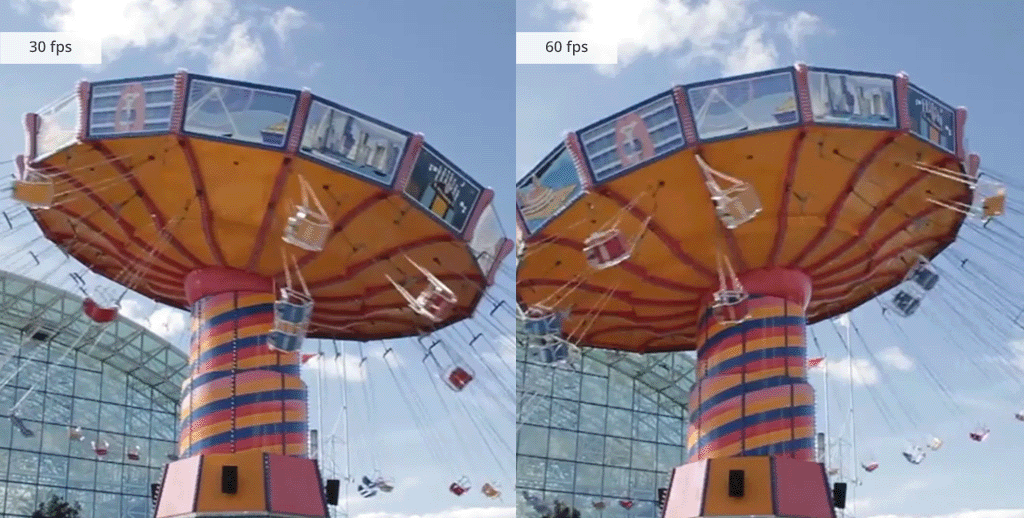
If you need to record slow-motion footage, experiment with 30 vs 60 FPS iPhone or camera settings. 60 FPS is typically the best choice, as it allows videographers to record more frames per second. Videos with a high frame rate look less choppy and more detailed when you slow them down. 60 FPS allows professionals to capture fluid movement naturally.
In contrast, 30 FPS allows videographers to capture videos with a lower frame density, making this frame rate hardly the best choice for those who need to record high-quality slow-motion videos. Due to a lower number of frames, 30 FPS slow-motion footage is likely to look choppy. You’ll notice this in fast-paced scenes, where the gaps between frames become obvious.
Professional videographers who want to emphasize important details or capture specific moments in slow motion shoot at 60 FPS to achieve higher clarity. Capturing extra frames will allow you to avoid blur and streamline post-processing, as it will be easier for you to emphasize specific moments.
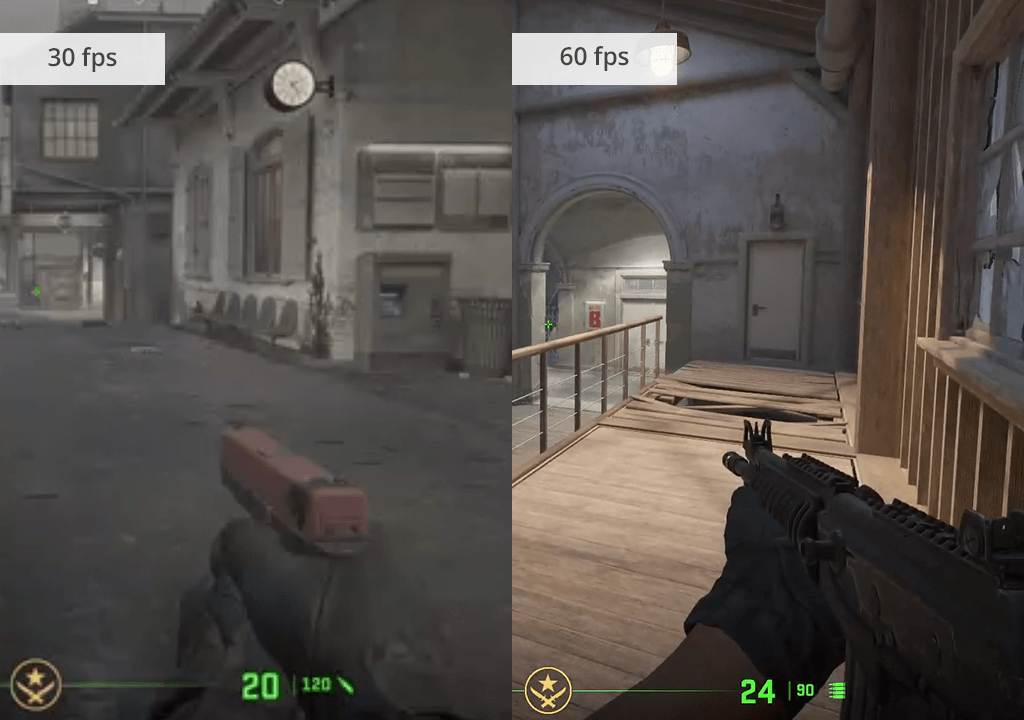
When deciding on what frame rate to choose and thinking about the specific filmmaking techniques you can use, make sure to consider several important things.
Many people mistakenly believe that shooting at a higher frame rate allows for capturing footage of better quality. However, the quality of an output video is impacted by many factors, including bit rate, lighting, resolution, and color accuracy.
Choosing a higher frame rate does not allow you to fix the issues caused by other factors. Based on my experience, a 60 FPS video might look bleak and unprofessional if there are issues with lighting and color balance.
Now that you know about the 30 FPS vs 60 FPS difference, choose the frame rate depending on the type of video you are going to shoot. If you want to tell a story and shoot a narrative-focused video, use 30 FPS to capture content with a cinematic feel. 60 FPS is the best choice for capturing action-packed scenes, including sports games and fast movement.
While 60 FPS is more suited for specific shooting situations, 30 FPS has wider use. When working on my projects, I prefer to shoot narrative videos at 30 FPS, as it allows me to achieve a traditional film effect. I shoot at 60 FPS only when I need to capture seamless motion.
If you work in poor light conditions, 30 FPS is a better option. It allows me to shoot at low shooting speeds. This way, the lens can capture more light. As a result, my footage will look more detailed.
When I shoot at 60 FPS in low-light situations, my videos look dark and less detailed due to a high shutter speed, reducing light intake. This is why 30 FPS is a more feasible choice for those who work in poor-light conditions.
When shooting dynamic scenes with a lot of motion at 30 FPS, it might be impossible to capture important details with high clarity. Your output videos will look blurry, and their quality will be low. The 60 FPS frame rate is better suited for quick movement with high accuracy. Your videos will remain clear even when you try to capture subjects who move quickly.
When I realized how to choose the right 30 FPS vs 60 FPS camera settings depending on a shooting scenario, I was able to record immersive footage of sports games at 60 FPS. 30 FPS does not allow me to capture crisp content when the subject is moving quickly.
If you are shooting a film for a theatrical release, it’s better to opt for 24 FPS, as it’s the industry standard. In some situations, you may need to shoot footage in 30 FPS. You can easily turn such videos into GIF files. However, you can easily convert it to 24 FPS later using dedicated tools that allow users to delete one frame for every five frames.
If you shoot at 60 FPS, converting your video will be much more challenging. As a result, you will have to deal with choppy playback after removing too many frames. This is why it’s better to shoot at 30 FPS and convert footage to 24 FPS later to streamline post-production.
However, if you are going to shoot slow-motion videos, 60 FPS will help you record more frames. As a result, your videos will seem smoother. For instance, it will allow you to capture falling rain, butterflies, or running athletes with ease.
By adding extra frames, you can record mesmerizing videos of fast-moving subjects captured in motion. A high frame density makes it easier for editors to emphasize specific frames during post-processing. I often shoot at 60 FPS to achieve a smooth effect and highlight important scenes.
Together with other members of the FixThePhoto team, I decided to discover which frame rate is best suited for different types of video. We analyzed the following types of content:
We used pro-level equipment to capture each type of footage at 30 FPS and 60 FPS. The usage of the same settings and conditions helped us achieve consistent outputs. Then, we compared the videos shot at 30 FPS vs 60 FPS side by side. We used high-resolution monitors to check whether there were any differences in detail, visual style, and the smoothness of movement.
Our thorough testing approach helped us reach the following conclusions.
30 FPS makes it easier to achieve a realistic effect of high cinematic quality, especially when shooting narrative and slow-paced videos. Even though smoothness is lower, it enables a videographer to make a video look more like a classic film and tell an emotional story that will evoke a strong response in a viewer.
This frame rate is best suited for shooting dramatic videos, recording interviews, and shooting films, or making a video slow motion on iPhone.
60 FPS stands out for excellent smoothness, making this frame rate perfect for those who want to shoot scenes with a lot of motion, such as videos capturing sports events. It is used by those who want to record gaming sessions, create dynamic vlogs, or produce other types of fast-paced content.